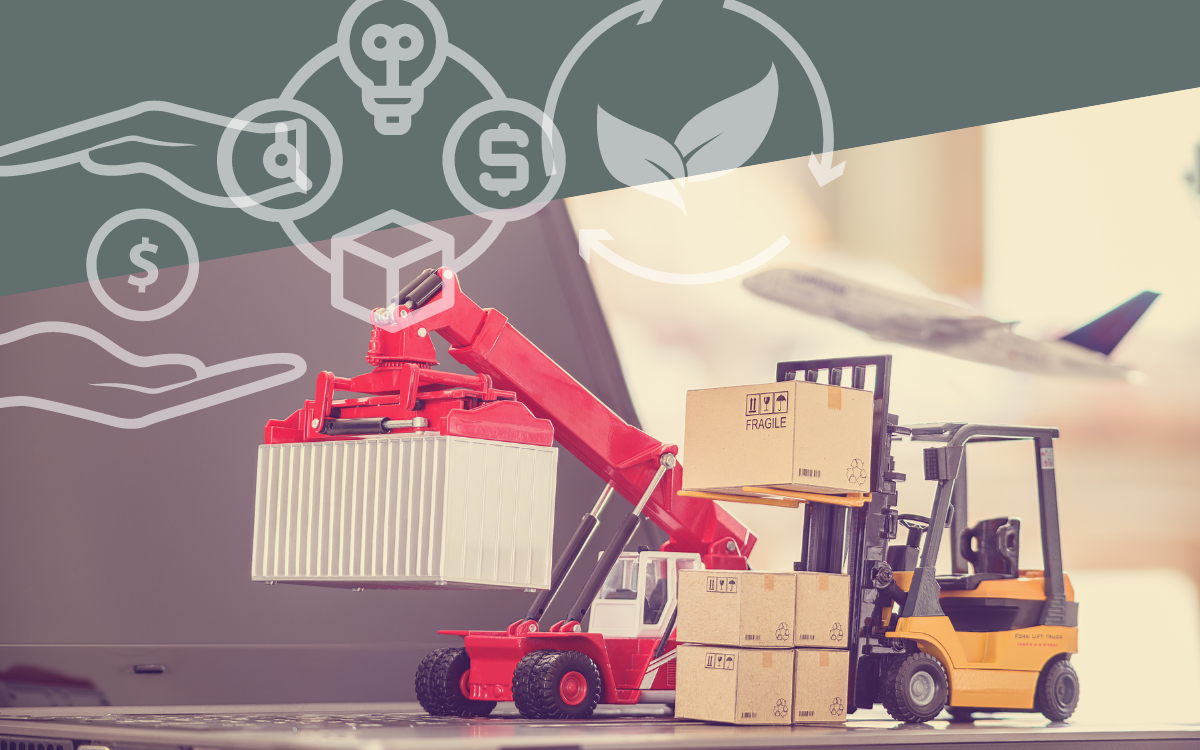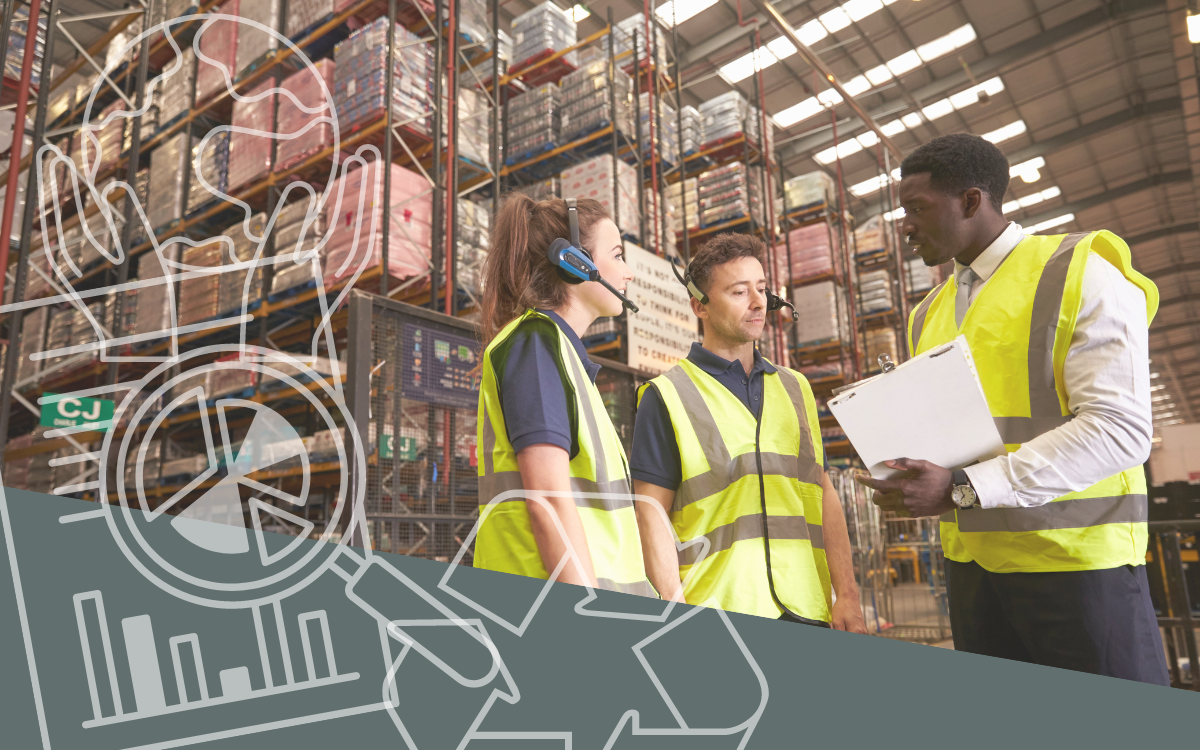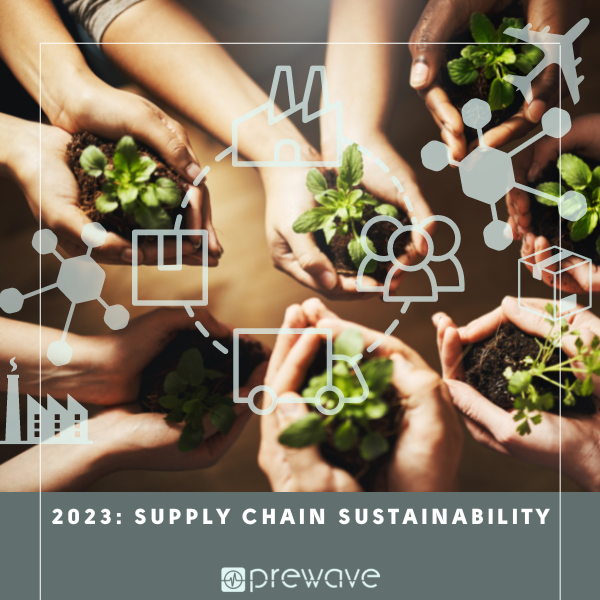Supply chain sustainability is a business issue affecting an organisation’s supply chain or logistics network in terms of environmental, risk, and waste costs.
As sustainability awareness gains traction, a trend has developed that finds companies imposing sustainability standards on their suppliers, which get handed down the supply chain and serve to improve the sustainability of all participants in the process. It can be thought of as a cascading waterfall of practices that should, in theory, make the whole supply network more sustainable.
In reality, however, it isn’t quite so. The number of scandals caused by suppliers not adhering to sustainability standards has increased in recent years. This begs the question: if Tier 1 suppliers fail to foster and implement sustainable practices—what is happening further down the line, with Tier 2, Tier 3, and most especially, Tier-N suppliers?
This article will examine the main issues preventing supply chain sustainability in 2023, and provide actionable insights for a more sustainable future.

The Main Issues
1. THE SCALE AND COMPLEXITY OF SUPPLY CHAINS
The scale and complexity of supply chains can make it more difficult to ensure sustainability in several ways:
- Tracking and monitoring the environmental and social impacts of a large and dispersed network of suppliers and intermediaries can be challenging, making it difficult to identify and address sustainability risks.
- Coordinating efforts to improve sustainability across a complex supply chain can also be difficult. Your suppliers may have different priorities, resources, and capabilities, which can make it hard to align efforts and achieve collective action.
- The sheer size and scope of a supply chain can make it difficult to implement sustainability initiatives that require significant changes to processes, systems, or technologies. This can be especially true for small or medium-sized suppliers, who may lack the resources to make such changes.
- Complex supply chains can also increase the risk of sustainability issues, such as human rights violations, environmental degradation, and corruption, as it can be more difficult to monitor the activities of a large number of suppliers and intermediaries—especially Tier-N.
2. THE NEED FOR AFFORDABLE AND RELIABLE RESOURCES
The need for affordable and reliable resources represents a significant challenge for achieving sustainability, due to:
- The extraction, processing, and use of affordable resources having negative environmental and social impacts. For example, the extraction of fossil fuels can lead to air and water pollution, while the use of fossil fuels contributes to climate change.
- Affordable resources potentially leading to resource depletion and scarcity, which can have negative economic, social, and environmental consequences. For example, overfishing can lead to the collapse of fish stocks, while the overuse of water resources can lead to water scarcity and ecosystem degradation.
- The extraction, processing, and use of reliable resources, such as energy and water, while equally important for maintaining economic and social stability, can lead to long-term negative consequences. For example, the construction of large hydroelectric dams can lead to the displacement of local communities and the destruction of ecosystems.
- The cost of sustainable resources and technologies being higher than traditional resources and technologies. Additionally, the lack of infrastructure and support for these sustainable options can make them unreliable.
3. CONFORMING WITH EMISSION STANDARDS
Emission standards are regulations that set limits on the amount of pollutants that can be emitted from various sources, such as vehicles and industrial facilities. Complying with these standards can be costly for businesses and organisations, especially for those that rely on technologies and processes that emit high levels of pollutants.
There are other challenges associated with emission standards, including:
- The cost. A factory may need to install new equipment or switch to cleaner fuels to reduce emissions, for example, which can be a significant investment.
- Unintended consequences, such as shifting pollution from one area to another. For example, stricter standards for vehicle emissions may lead to an increase in demand for electric vehicles, but if the electricity used to power those vehicles is generated from fossil fuels, it can lead to an increase in emissions from power generation instead.
- The high level of complexity, which can make it difficult for organisations to comply with them. This can be especially true for small and medium-sized enterprises, which may lack the resources to navigate the regulatory landscape.
- They are easy to overlook or might not be properly enforced in some countries or regions, which can lead to non-compliance and increased pollution.

6 steps to sustainable supply chains
1. MAPPING OUT THE SUPPLY CHAIN
By understanding the various components of a supply chain and the relationships between them, an organisation can identify sustainability risks and opportunities. For example, mapping out a supply chain can reveal the locations of suppliers and intermediaries that may be using environmentally-damaging practices or sourcing materials from unsustainable sources.
Mapping out the supply chain can also help you identify areas where you can leverage technology and data. For example, using digital tools to track and monitor the environmental and social performance of suppliers can help organisations identify areas for improvement.
If a supplier is transporting a product long distances, this could increase its carbon footprint—by having this information at your fingertips, you can decide whether your suppliers are aligned with your sustainability initiatives or not.
2. EVALUATING YOUR SUPPLIERS
Once you have mapped out your supply chain and know every link in the chain, you have to evaluate all suppliers—including Tier-N.
The goal is to gain a deeper understanding of which factors influence your suppliers—and indirectly influence you, as well. Supplier evaluation, however, goes beyond this, and having the right information can significantly impact your sustainability goals.
Evaluating suppliers is an important aspect of sustainability because it allows companies to ensure that their suppliers are operating in an environmentally and socially responsible manner. This can include assessing the supplier’s energy and water usage, waste management practices, and compliance with labour laws.
By regularly evaluating suppliers, companies can identify areas for improvement and work with suppliers to implement sustainable practices, which can help reduce the overall environmental impact of their supply chain. Additionally, it also helps companies to identify any negative impacts on human rights and worker welfare, and take action to ensure that suppliers are held to high ethical standards.
3. MONITORING YOUR SUPPLIERS
Sustainability issues might arise at any given time at any supplier, so it is vital that all suppliers in your company’s ecosystem are monitored. By doing this, you:
- Remain up-to-date on everything that is happening behind the scenes
- Are able to react to any violations in advance, thus curbing the level of impact on your own organisation
Solutions such as Prewave can monitor suppliers in 50+ languages and across all channels in real-time—giving you a significant competitive advantage.
Book a demo to find out more

4. IMPLEMENTING AN ORGANISATIONAL CULTURE OF SUSTAINABILITY
Implementing an organisational culture of sustainability involves creating a shared mindset and set of values within an organisation that prioritises environmental and social responsibility.
This can include integrating sustainability into the organisation’s mission and goals, creating policies and procedures that support sustainable practices, and providing education and training for employees on sustainability issues. Additionally, it involves encouraging employee participation and engagement in sustainable initiatives, and promoting transparency and accountability for sustainability performance.
An organisational culture of sustainability is important because it helps to ensure that sustainable practices are embedded throughout the organisation and are not just confined to a specific department or initiative. By fostering a culture that prioritises sustainability, companies can create a sense of purpose and motivation among employees, improve their reputation and attract customers, and ultimately lead to long-term business benefits such as cost savings and risk management.
5. COLLABORATE WITHIN YOUR INDUSTRY OR SHARE OF SUPPLIERS
Collaboration with partners and customers is an important aspect of ensuring sustainability within an organisation. By working with partners, companies can share resources, knowledge, and best practices, which can help to improve the overall sustainability performance of the supply chain. Collaboration can take many forms, including joint sustainability initiatives, co-creation of sustainable products and services, and sharing of sustainability data and metrics.
Collaborating with customers also helps companies to understand their needs and expectations with regard to sustainability, which can inform product development and marketing strategies. It also allows companies to demonstrate their commitment to sustainability, which can improve customer trust and loyalty.
6. TRACKING AND MEASURING A SUSTAINABILITY FRAMEWORK
Measuring and tracking a sustainability framework is important because it allows companies to understand their environmental and social impact, identify areas for improvement, and track progress over time. A sustainability framework is a set of guidelines, metrics, and targets that organisations use to evaluate their sustainability performance. By measuring and tracking performance against these guidelines, companies can identify areas of strengths and weaknesses, and make data-driven decisions to improve their sustainability performance.
There are different frameworks that companies can use to measure and track their sustainability performance. Some of the most widely used frameworks include the Global Reporting Initiative (GRI) Standards, the Sustainability Accounting Standards Board (SASB) standards, and the Task Force on Climate-related Financial Disclosures (TCFD). Each framework provides a set of guidelines and metrics that companies can use to evaluate their performance in areas such as carbon emissions, water usage, and labour practices.
Measuring and tracking sustainability performance is also important for companies to be transparent and accountable to stakeholders, and to report on their sustainability performance in a meaningful and standardised way. This helps to build trust and credibility with stakeholders, and can also help companies to identify opportunities to improve their sustainability performance and reduce their environmental impact.
Conclusion
Approaches to sustainability are as varied as the issues themselves. No single action will solve all problems, and the economy still has a long way to go to support a truly sustainable future.
What is clear, however, is that visibility along the supply chain is a concept that finds its way into almost all sustainability solutions. Prewave is perfectly suited to make a big leap forward in terms of sustainability evaluation, monitoring and visibility. We are already working with a vast network of companies to improve their supply chain resilience, and we would be happy to show you how you can strengthen your supply chain and reach your sustainability goals.
Get in touch with us to find out more!




